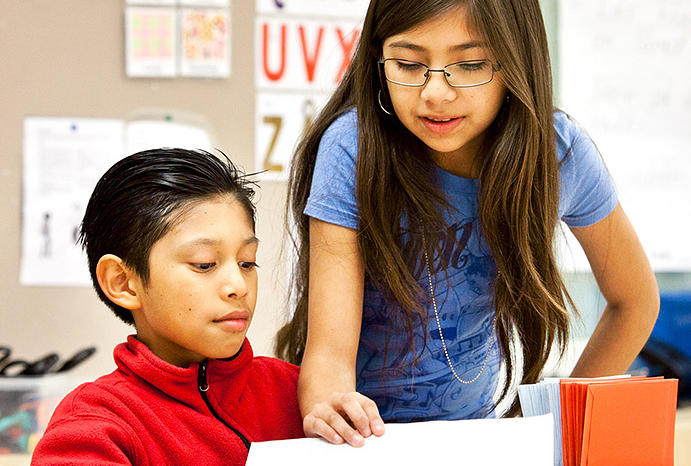Pre-school class
Engelska (ENG)
Most children begin in a pre-school class when they are 6 years old. After the pre-school class, they begin in the nine-year compulsory school.

Children who live in Sweden are subject to compulsory school attendance from the autumn semester of the year that they turn 6. Then, most children begin in the pre-school class. After the pre-school class, the children begin compulsory school or equivalent types of school. Every academic year is divided into two semesters, one autumn and one spring semester.
Schools can be municipal or independent
Compulsory schools can be municipal or independent. Most compulsory schools are municipal and the most common is that pupils attend a municipal school close to home.
Every compulsory school has the possibility of having various specialisations, such as English classes or culture and sports classes.
Independent schools are open to all and the teaching must be equivalent to that provided in municipal schools. Independent schools have a different operator (owner) than the municipality.
Pre-school class
All children must attend a pre-school class from the year that they turn 6, but in some cases, the child can begin at 5 or 7 years of age. The pre-school class is free of charge and comprises at least 525 hours during an academic year.
The teaching shall stimulate development and learning. It must also prepare pupils for continued education. Play, creativity and exploration are important parts of children’s learning.
Activities in the pre-school class
The education shall be based on a comprehensive view of the pupil and his or her needs. The pre-school class is also intended to give the children an opportunity to develop good relationships to classmates and a sense of belonging and security in the group. Likewise, the teaching shall give the pupils an opportunity to develop an ability to cooperate based on a democratic and empathetic approach.
The teaching shall provide the preconditions for the pupils to develop their ability to try and develop ideas, solve problems and translate ideas into action.
In the pre-school class, the pupils get to communicate both orally and in writing in various contexts. Through various aesthetic forms of expression, the children learn to communicate in various ways using, for example, drama, dance, music, art and design. The pre-school class also includes using mathematical concepts for solving problems and exploring and describing events and connections in nature and other places that the pre-school class visits. The pre-school class shall provide the opportunity for the pupils to exercise in different settings so that they can understand what can affect health and well-being. The activities may take place for a maximum of 6 hours per day.
It is the municipalities that are responsible for the pupils being offered a pre-school class. Pre-school classes arranged by independent schools are an alternative to the municipal activities.